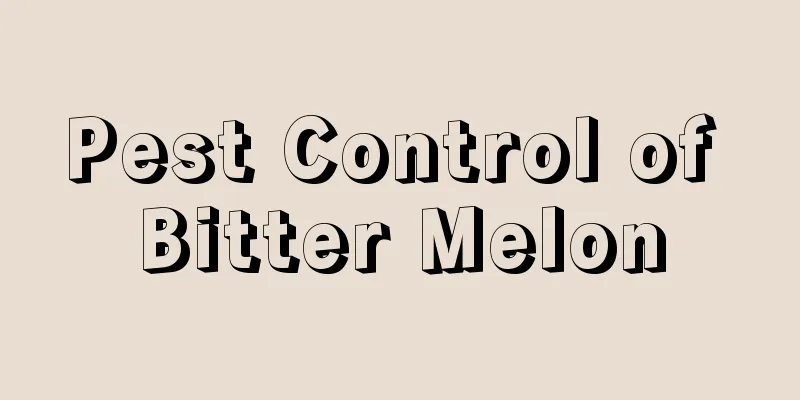Pest Control of Bitter Melon

Worker SpiderIf bitter melon is attacked by worker spiders, their juice will be sucked away, causing the leaves to turn yellow, leading to premature aging of the plant and the failure of the young melons to expand. The specific prevention and control method is to check the leaves frequently during the growth stage of bitter gourd. Once pink insects are found on the leaves of the plant, use 1000 times mite-killing water solution or 1500 times mite-sweeping water solution to spray them, about once every 7 to 10 days, 2 to 3 times will be enough. Whitefly, aphids, tea yellow mitesThese pests can damage leaves, negatively affecting flowering and fruiting, and may also spread viruses, increasing the risk of serious diseases. When we find the above-mentioned pests on the spider, we can spray 1500 times omethoate aqueous solution on the leaves for timely prevention and control. Swallowtail butterfly, toxic moth, scarab beetleThese pests usually bite the leaves, causing a loss of nutrient accumulation, which in turn affects the flowering and fruiting of bitter melon and the growth of young melons. The solution is to spray 800 times the amount of trichlorfon aqueous solution or 1000 times the amount of DDT aqueous solution on the leaves after the new branches and leaves emerge. Cucurbit fruit flyThe melon fly is one of the biggest enemies of bitter melon. It will enter the fruit of bitter melon, causing the young melon to deform, even rot and deteriorate, and also produce an unpleasant odor. The measure to be taken is to use 1000 times the aqueous solution of Fipronil to spray on the young melons. Generally, 2 to 3 times will be enough. Remember to pick the rotten fruits in time. |
>>: Celery pest and disease control
Recommend
The efficacy and function of Bletilla striata
The efficacy and function of Bletilla striata Spe...
What to do if frangipani leaves fall off
The reason for this phenomenon First, it may be b...
What is the best way to fertilize chestnut trees (what fertilizer to apply after chestnut harvest for high yield)
Chestnut is a fruit tree native to my country wit...
Why are the leaves of Monstera small? How to solve it?
1. Lack of sunlight Reason: Although Monstera is ...
Does air plant prefer shade or sun?
Does air plant prefer shade or sun? Air plant is ...
The role of sage in Western cuisine
Food Pairing In Western cooking, sage is often us...
What are the cultivation methods and precautions of white orchids
White Orchid Introduction White jasmine is an eve...
Can the water used to blanch meat be used to water flowers directly? How long does it take to ferment before watering flowers?
Can the water used to blanch meat be used to wate...
What fertilizers are needed for grape growth (what fertilizer is most suitable for grapes)
Now many villages have grape picking gardens. Wit...
What crops are suitable for growing in Shaanxi? What are the main cash crops grown in Shaanxi?
Shaanxi is a northern temperate and subtropical a...
How many years does it take for the sapodilla to bear fruit?
After several years of planting, the fruit of the...
How to grow Cyperus tuberosus
1. Breeding environment 1. Soil: When growing chr...
How to grow red lotus succulent plants and how to grow them into old piles
1. How to grow red lotus succulent plants 1. Temp...
How to prune the roots of kumquat
Does kumquat need root pruning? When repotting ku...
How to keep seeds of Globe amaranth and how to collect seeds after flowering
How to keep seeds of Globe amaranth The globe ama...









